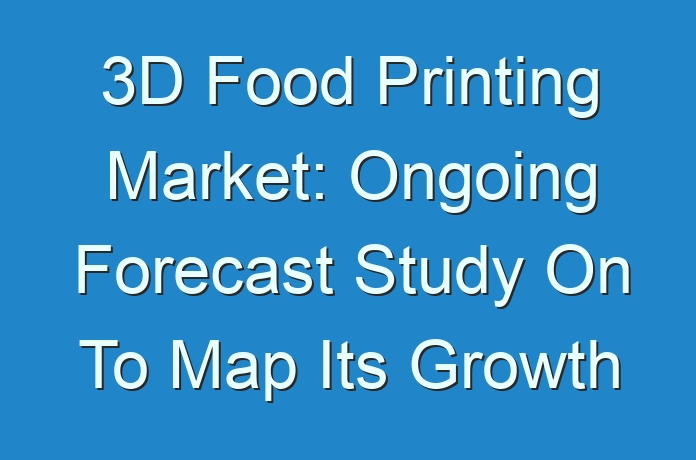
The 3D Food Printing is a type of additive manufacturing technology which is used to print three dimensional food products and cuisines. It is a combination of the sensor, actuators, storage capsules and a software which are integrated to work together. A 3D food printer uses components such as rollers, head sprays and programmed algorithm for printing the defined food product or cuisine.
3D food printer works on the principle of layer by layer deposition of raw and processed ingredients. The printer deposit a layers of raw material which is known as additive manufacturing technique. Additionally, the advanced 3D printers works on binding technique which adhere raw ingredients together by using a type of edible cement. Moreover, the advanced 3D printers uses nozzles, powdery material, lasers, and robotic arms to make patterned chocolate, sugar sculptures, crispy pizzas, and latticed pastry.
The major difference between the 3D food printers and traditional food manufacturing machines is based on their working principal. Traditional machines uses decentralized methods for producing cuisines wherein different machines, performing different actions on the raw ingredients are integrated together to produce a particular food item. Whereas the modern 3D printers works on the centralized methodology, that is, the 3D printers works as a stand-alone unit which performs multiple actions on the raw ingredients to cook a programmed food. This is one of the drivers for the 3D food printing market and it is expected to support the growth of the market during the forecast period from 2017 to 2025.
The traditional food printings are now being replaced by the modern methods. This can affect the market of the traditional food printing as the modern food printers (3D food printers) provides almost all the benefits of the traditional systems along with other improvements such as customizing the look of the cuisine, customizing the ingredients as per nutritional requirements, pre-programming the printer to cook desired food at set time and some other improved features. Moreover, in the applications, for instance space exploration, where the cooked and bulky foods can be an impediment in terms of increased weight and also short life of food products, 3D food printing provides a promising alternative. In such applications, the 3D food printers can be used to cook fresh food using the raw and dry ingredients offering extended life of ingredients. Though the price of the 3D food printers is currently high, it is expected to fall during the forecast period owing to the increasing adoption and technological developments
For More Industry Insight, Request Sample@ https://www.transparencymarketresearch.com/sample/sample.php?flag=S&rep_id=29081
The 3D food printing market can be segmented based on ingredient, end-use vertical and geography. By ingredient, 3D food printing can be classified as dough, dairy products, food components (proteins, carbohydrates, and fats), meat and poultry, and others. Based on the end-use vertical, the major market segments can be residential, and commercial. The commercial end-use vertical can be further subcategorized into restaurant, confectionery, bakery and others. Region wise the 3D food printing market can be segmented into North America, South America, Europe, Asia Pacific and Middle East and Africa.
The commercial end-use vertical is expected to be the most dominating market segment for the 3D food printing market, where the precision, speed and diversity plays a major role in luring and retaining the customers. Along with this, the residential end-use vertical is the fastest growing segment in which the 3D food printings is mainly used to cook the food which is difficult to cook with the traditional cooking methods at home. The 3D food printing market is expected to witness prominent growth in the developed regions such as North America and Europe. Moreover, in the developing countries primarily in China, Japan, and India, the 3D food printing market is expected to show rapid growth owing to inclination towards fast food.





